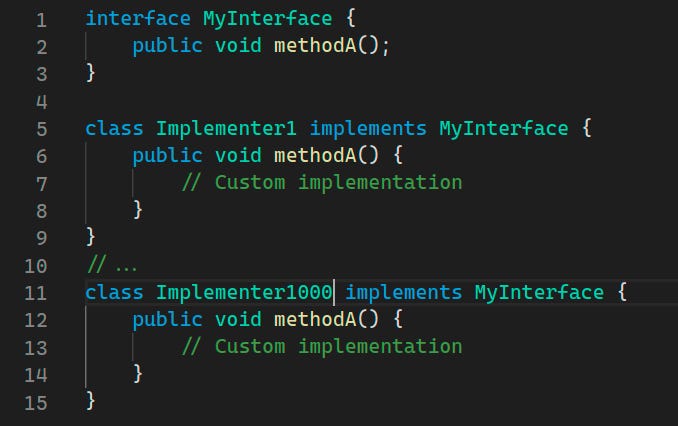TWH#44: Building a Great Relationship With Your Boss
How to successfully do your part to make the work… work.
Before we start, my gratitude to all of you who answered last week’s poll. The results were overwhelmingly (84%) in favor of a supplemental Sunday edition with the best of what I read online during the week—a nod back to the earlier times of the The Hagakure.
Expect the first supplemental edition to arrive in your inbox this Sunday. And for those of you who answered ‘No’, I hope you don’t mind just skipping over it. 🙂
In my coaching practice, I support my clients with all sorts of challenges. One thing they almost all have in common is that they don’t leverage the relationship with their own manager anywhere near its full potential. The result is often unnecessary difficulty on top of what is already a tough job. Instead of an extra level of support, they end up with an extra burden.
While reporting to a technical manager has its own challenges, reporting to a non-technical individual is another level. And if that individual happens to be the CEO and a co-founder you must be measured and intentional about it.
In my engineering management career, I experienced all that—and the highs and the lows that come with it. Creating a great working relationship with your “boss” is not easy, but it is doable, and well worth it. This week I’m sharing what I learned, so you can level up your relationship with your own manager.
What Does a Great Work Relationship Look Like?
As Stephen R. Covey suggests in “The 7 Habits of Highly Effective People, begin with the end in mind. What would a phenomenal relationship with your manager look like? Creating this vision for yourself early on gives you something inspirational worth aiming for.
Fast forward 6 months and imagine yourself telling a friend how great it is to work for this person. What’s happening on a daily and weekly basis? Write it down. Be specific.
What do your 1-on-1s look like? What do they feel like?
What kind of support does your manager give you? How do you support him or her?
How are you delivering the inevitable bad news? How are they being received?
How are you tracking progress? How do you celebrate milestones?
What is most important to you in this relationship that you don’t want to lose?
By doing this exercise, you are not only creating clarity for yourself, you are “tricking” your brain into making it a reality.1 Moreover, you are putting yourself in a state of positive emotion, which is essential for change.
Even better?
Share it with your manager. Some form of it, at least. It may feel awkward at first, but the connection it brings is something to be reckoned with. And if you can inspire your manager to do the same in return, you’ll see the gaps and the overlaps. This is where you start setting yourselves up for success.
Manage Your Own Psychology
Due to the power dynamics inherent in any manager/report relationship, it’s easy to get upset by what your manager says or does (or doesn’t say or do). Earlier in my career, I struggled a lot with this. Becoming a VP of Engineering myself, reporting to a CEO and co-founder, being part of a senior leadership team, was a sobering experience—it was a lot harder than I gave my previous bosses credit for.
Coming back to Covey, Habit 5 is “seek first to understand, then to be understood.”
This is where empathy is practical advice.
If I could pick one skill, and one skill only, this would be it—for any relationship, but especially so for the relationship with a manager. So many difficult conversations become a lot less difficult if only you get curious about the other person’s challenges and needs before getting into yours.
What keeps my manager up at night?
What is success for them now and in the long run?
What pressures are they subject to? Where do they come from?
What do they expect from me? What do they hope to have from me?
Remind yourself that you don’t have to assume nor guess the answers to these questions—you can just ask them directly. This will not only give you at least some insight, it will make your manager feel seen and heard, which will predispose them to be more collaborative.
The Interface: Fostering Aligned Autonomy
Alignment without autonomy is a straightjacket.
Autonomy without alignment is… god help us.
Aligned autonomy is where the game’s at.
Think of yourself and your manager as human vectors. Through the work you do and the decisions you make, you’re both applying force in a certain direction. The addition of your vectors is the result of the energy you pool together.2 We can visualize this with 3 separate scenarios:
Only by applying your respective forces in roughly the same direction can you truly maximize the sum of your forces.
As most of my coaching clients are engineering leaders, software engineering analogies tend to work well. I often talk to them about creating an interface that abstracts implementation. No one likes a manager who meddles with their team. But most meddling managers do so because they are not getting what they want—and they know no other way of getting it.
Enter “The Interface”.
In object-oriented programming terms, an interface provides a way to enforce a common contract between different classes in a program, allowing them to interact with each other in a predictable and consistent way.
Common contract.
Predictable and consistent way.
The essence of a stable, fruitful, working relationship. The framework for two human vectors to remain aligned, roughly pointing in the same direction.
The “methods and properties” of this interface will be specific to each manager/report duo. What’s most important, though, is the mental model and the creation of a habit around it. A few pointed questions can help define the interface:
How do we both define success for this quarter?
How will we know how well my team is performing?
What metrics will we always look at together?
The value of creating this interface is as much in the conversations necessary to build as it is in the ongoing usage itself. Figuring out satisfactory answers to the questions above is never easy, but always insightful. It’s yet another example of the power of making the implicit explicit. As Seneca said, “If one does not know to which port one is sailing, no wind is favorable.”
I’m working with fellow leadership coach Mounica Veggalam on an online course for ambitious engineering leaders to develop their communication and influence. It will include role-playing and other exercises, as well as templates, to help you develop these interfaces.
Sounds interesting? Sign up to get on the waitlist and get free resources + early bird discount.
Doesn’t Matter Where You Start, But How You Improve
You envisioned what a great working relationship looks like. You discussed it with your manager. And, together, you did the work to create an interface that drives aligned autonomy between the two of you. Great!
But that’s just the beginning. What matters is the day to day, as weeks turn into months. How will you use all of this? And, perhaps even more importantly, how will you get better and better at it? Because the starting point is only that—a starting point.

Feedback is one of those words that are uttered so often they almost lose their meaning. There is an enormous gap between how much feedback is talked about and how much it’s actually given and received.
The last piece in this puzzle that is the relationship with your manager is continuous improvement. The challenge is that there is always so much going on, so many fires to put out, that it’s easy to talk about what we work on all the time, and not at all about how we work. Yet, that’s by far where most of the leverage is because it affects everything else.
So, explicitly agree with your manager on how the two of you will drive continuous improvement in how you work. Help them see why it matters, and why the investment pales in comparison to the return.
One way to go about it is what I like to call institutionalized feedback, a fancy way of saying we commit to always giving each other feedback at the end of every 1-on-1. You need no more than 5 minutes for this, and if you keep at it, you’ll get really good. The key, though, is to take the feedback seriously—and, if you accept it, to act on it. Nothing drives trust like observing that our input actually create change in the other person.
But My Manager…
Yes, I’m making this stuff sound a lot easier than it is. I assure you it’s not, especially when there’s already some resentment in the mix. However, that’s when compassion and curiosity are of the essence. It’s crucial that we regulate our emotions and transform them into something useful. Anger, for example, is not a bad thing as long as we manage to transform it into positive energy and channel it into what we can control.
My intention with this post is not to condone bad behaviors from managers. If anything, it’s to help you hold some space and create clarity about what’s truly going on. Startups, by their very nature, are places with a lot of stress and free-floating anxiety that lead to questionable outcomes. Ultimately, if your decision is to part ways with your manager or even with your company, at least you can do it consciously from a place of inner peace, rather than reacting from a place of resentment.
TL;DR
Envision and co-design with your manager what a great work relationship between you should look like.
Reduce assumptions and negative stories in your mind by proactively seeking to understand before trying to be understood. Get curious about their challenges, needs, and expectations.
Create aligned autonomy by jointly defining an interface that acts as a contract that the two of you keep coming back to.
Build a mechanism for continuous improvement into the relationship, for example by always setting time aside at the 1-on-1s for candid feedback.
Visualization has been shown to activate the brain's reward and motivation centers, making it a powerful tool for motivation and goal-setting.
You can use this website to play around with adding vectors. Fun.









Great advice! Related to "Manage Your Own Psychology," my favorite reminder is "Always think like your boss." The more we think like our boss, the greater our empathy and the greater the alignment.